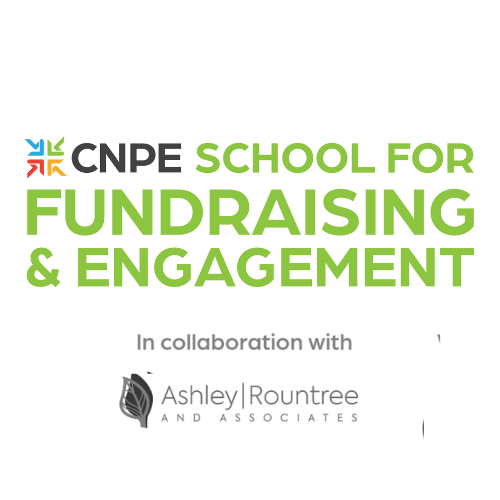Online Fundraising: Proven Strategies to Increase More Funds for Your Nonprofit
Wiki Article
The Duty of Neighborhood Interaction in Nonprofit Fundraising: Building Lasting Relationships for Lasting Support
Neighborhood interaction is increasingly acknowledged as a vital part of successful not-for-profit fundraising. By fostering authentic relationships with regional stakeholders, companies can cultivate trust fund and loyalty, which are vital for sustainable support. Nevertheless, the techniques and techniques used to engage communities differ widely, increasing important questions concerning efficiency and effect. What are the very best methods for cultivating these crucial connections, and exactly how can nonprofits determine their success in this sector? Comprehending these dynamics could substantially influence the future of fundraising initiatives and the overall mission of nonprofit companies.Comprehending Area Interaction
Area interaction is a crucial element of effective nonprofit fundraising initiatives. It refers to the methods and tasks that organizations utilize to get in touch with their regional areas, cultivating relationships that are mutually valuable. Understanding area interaction entails acknowledging its complex nature, that includes outreach, cooperation, and engagement. Nonprofits must determine vital stakeholders-- such as area members, regional companies, and various other companies-- to develop effective interaction approaches.Effective neighborhood involvement is asserted on active listening and responsiveness to the needs and rate of interests of the community. This procedure includes obtaining comments, recognizing neighborhood dynamics, and making sure that the company's goal aligns with neighborhood top priorities. Involving the community can take numerous types, including public meetings, volunteer possibilities, and partnership efforts, each made to motivate participation and investment in the company's objectives.
Furthermore, area involvement should be come close to as a continuous discussion instead than a single initiative. By fostering a comprehensive environment where neighborhood voices are heard and valued, nonprofits can build a strong foundation for future fundraising endeavors. Inevitably, a deep understanding of area interaction equips companies to create genuine connections that improve their total effectiveness and sustainability.
Benefits of Strong Relationships
Solid relationships formed with area interaction return numerous advantages for nonprofit fundraising efforts. Primarily, these relationships foster trust fund and integrity, crucial components in encouraging contributors to add. When potential supporters see a not-for-profit actively included in their neighborhood, they are a lot more most likely to count on its goal and effect.
Moreover, these partnerships help with reliable communication. Nonprofits can leverage their connections to share tales of effect, updates, and requires, ensuring that supporters stay enlightened and engaged. This open line of interaction not only reinforces bonds but additionally encourages word-of-mouth promo, expanding the nonprofit's reach.
Last but not least, solid neighborhood connections can attract brand-new companions and enrollers. Services and individuals are a lot more inclined to straighten with organizations that demonstrate significant neighborhood involvement, giving added resources and assistance that can dramatically improve fundraising capacities. Hence, growing durable relationships through community interaction is essential to a nonprofit's lasting fundraising success.
Strategies for Efficient Interaction
How can nonprofits effectively involve their communities to boost fundraising efforts? Normal updates, involving material, and calls-to-action can galvanize area passion and engagement.Second, organizing neighborhood events, such as workshops, volunteer chances, or fundraising drives, assists in in person interaction, enabling nonprofits to display their influence and initiatives. These occasions not just elevate funds but additionally grow connections and allow community members to engage directly with the cause.
Third, carrying out personalized interaction strategies can enhance engagement. Customizing messages to particular contributor sections based upon rate of interests and previous contributions cultivates a feeling of belonging and financial investment in the organization's goal.
Finally, developing partnerships with regional businesses and community leaders can magnify outreach efforts. Collective efforts can improve presence and reputation, showing a collective commitment to the More Bonuses community's health. By incorporating these approaches, nonprofits can construct enduring connections that improve fundraising initiatives and drive lasting support.
Determining Interaction Success
While involving the area is crucial for successful nonprofit fundraising, determining the efficiency of these involvement efforts is similarly important. Developing clear metrics allows organizations to examine just how well they are linking with their audience and attaining their fundraising objectives. Secret efficiency indications (KPIs) such as contributor retention prices, volunteer participation degrees, and engagement on social networks platforms supply substantial information for assessment.
Consistently evaluating these metrics enables organizations to pivot their methods when necessary, making certain that area involvement continues to be lined up with their overall goal. Furthermore, sharing these outcomes with stakeholders cultivates transparency and builds trust fund, motivating more area participation. Inevitably, a robust measurement structure not only notifies future fundraising initiatives however additionally enhances the partnership in between the nonprofit and its advocates, preparing for sustainable success.
Study in Neighborhood Influence
Numerous study illustrate the extensive influence that community interaction can have on not-for-profit fundraising success. One notable example is the "Food for Idea" initiative, where a regional food bank partnered with institutions and businesses to host neighborhood suppers. These events not only increased funds but also fostered a sense of belonging among participants, her response dramatically increasing benefactor retention rates.Another compelling case is the "Environment-friendly Spaces Task," which entailed neighborhood residents in the revitalization of city parks. This initiative not just amassed monetary support from local companies but also grew a volunteer base that added to ongoing upkeep and programming. The sense of ownership and satisfaction among community participants converted right into continual payments.
In the realm of arts, the "Art for All" campaign successfully involved neighborhood artists and customers to produce collective art installations, resulting in enhanced visibility and donations for a regional arts nonprofit.
These examples highlight that when nonprofits focus on neighborhood click here to read involvement, they can create lasting connections that boost fundraising efforts, guaranteeing lasting assistance and promoting a lively area culture. Such instances show that neighborhood engagement is not simply a technique but an important pillar of not-for-profit success.
Verdict
In conclusion, neighborhood engagement is integral to the success of not-for-profit fundraising initiatives. Eventually, a durable structure of area support not just magnifies fundraising prospective but likewise cultivates a society of partnership, crucial for attaining long-lasting organizational goals and maintaining meaningful impact. fundraising consultant.Nonprofits should determine essential stakeholders-- such as area members, regional services, and various other companies-- to create efficient engagement methods.

In final thought, neighborhood engagement is indispensable to the success of not-for-profit fundraising efforts.
Report this wiki page